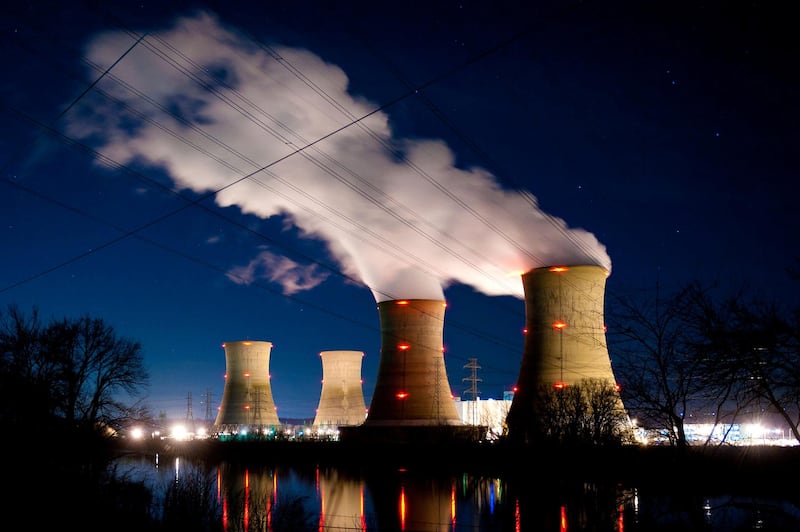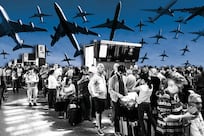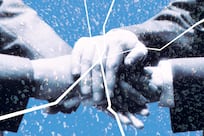Three Mile Island, best known for the biggest nuclear accident in US history, is months away from shutting down and throwing nearly 700 people out of work.
Only two of the nuclear plant's cooling towers still emit steam; the other two have been idle since a partial reactor meltdown in 1979.
The decision by Exelon, the owners, to decommission the plant is symptomatic of the broader crisis in the US nuclear power industry, even though it still provides 20 per cent of the country’s electricity.
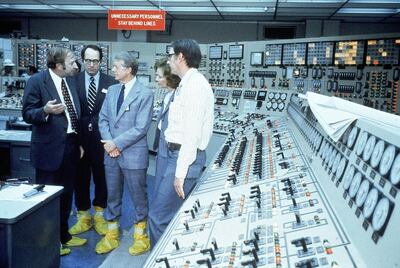
While other regions, notably the Middle East and North Africa, are embracing a nuclear future, the technology is past its sell-by date in the United States.
According to Apicorp Energy Research, the Mena region is set to add 15.8 gigawatts of nuclear capacity by 2030, an increase which it says would represent a “quantum leap”. The UAE's Barakah nuclear plant, scheduled to go online by 2020, will account for a third of that increase with four reactors of 1,400 megawatt capacity each.
The picture could hardly be more different in the US. Six nuclear plants have shut down permanently since 2013 and another 11 are due to disappear by 2025. The number of working nuclear reactors has dropped from a peak of 112 in 1990 to to 98 in August this year, according to the US Energy Information Administration.
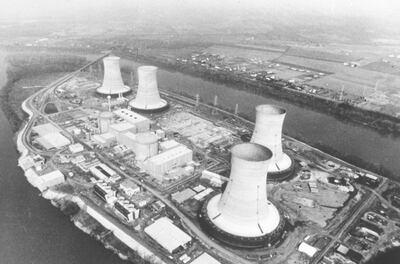
“Nuclear power in the US has definitely been squeezed, primarily because of the decline in natural gas prices caused by the fracking boom,” said Steve Clemmer, director of energy research and analysis at the Union of Concerned Scientists.
“Existing plants have become a challenge economically and new ones are expensive to build. Currently, there are only two reactors under construction.”
With electricity prices declining, the figures mean that about a third of nuclear power plants in the US are no longer economic.
Several states including New York, Illinois and New Jersey are now willing to offer subsidies to keep their power plants open.
The states say the move is environmentally driven, with nuclear power seen as a low-carbon form of energy which is less likely to contribute to climate change and helps meet carbon reduction targets.
Currently, the nuclear sector contributes more than 50 per cent of low-carbon electricity in the US.
Some argue that nuclear power could help the US meet climate change targets set by the Paris Climate Agreement, which was signed by Barack Obama and repudiated by Donald Trump.
A paper published recently in the journal Proceedings of the National Academy of Sciences describes nuclear power as the "vanishing low carbon wedge".
The paper, written by researchers at Harvard, the University of California San Diego and Carnegie Mellon, paints a grim picture of the industry’s future.
“There is no reason to believe that any utility in the United States will build a new large reactor in the foreseeable future,” the report noted.
“These reactors have proven unaffordable and economically uncompetitive. In the few markets with the will to build them, they have proven to be unconstructible.”
_______________
Read more:
[ The Middle East will be among the first casualties of Trump's climate change denial ]
[ Latest tests at Barakah successful as reactor systems exposed to 300-degree heat ]
_______________
Put at its most basic, the US has a choice of getting out of nuclear completely or pressing ahead with a new generation of smaller, more cost-efficient reactors.
Given the cost, the researchers believe the latter option is unlikely.
“We appear to be set to lose one of the most promising candidates for providing a wedge of reliable, low-carbon energy over the next few decades and perhaps even the rest of the century.”
Nuclear’s US woes are symptomatic of a wider malaise, argues Miriam Tuerk, chief executive of Toronto-based Clear Blue Technologies International, which specialises in wireless solar power providing electricity directly to consumers.
“The decline of the nuclear generation industry in the US is highlighting the wider problem of ageing infrastructure.
“Plants can cost anywhere from two to nine billion dollars to build and construction time can be 10 years easily.
“For every 40 cents you spend on generating the power, you spend 60 cents getting the electricity from the power station to the customer’s home or business.
“Companies like ours are disrupting the competition in the marketplace.
“In the power industry we still have monopolies and this is creating demand for alternative solutions.
"The speed to market of these new opportunities is fundamentally changing the industry.”
Mr Trump has tried to intervene, telling his energy secretary Rick Perry to take steps to keep loss-making nuclear power stations running.
The US president has argued that keeping them open is essential for national security.
But his argument is disputed by many experts who maintain that the US power system has sufficient energy reserves to cope without the nuclear reactors.
It has also run into opposition from the natural gas industry and free-market conservatives, who oppose any government intervention in the energy market.
John Quelch, dean of the Miami Business School, believes that the US has fallen behind commercial rivals in the nuclear power industry.
“Environmental objections have precluded the permitting of new nuclear plants,” he said.
“Innovation lags when you don’t have opportunity to bring your ideas to commercial reality. If you need a nuclear power station today, you’d buy it from China, France, Korea or Russia.”
